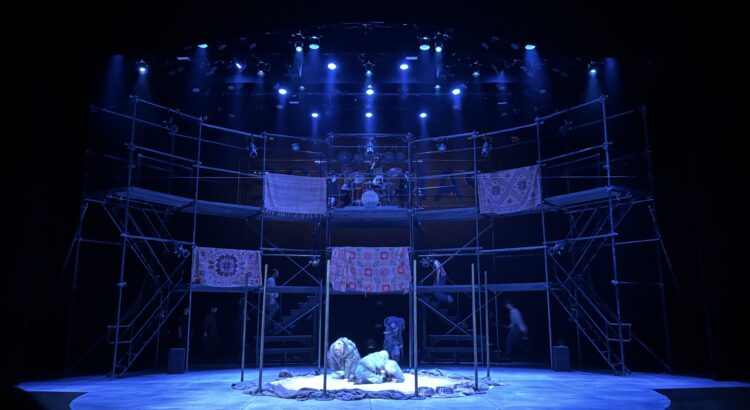On Thursday I had the chance to go see Pivot for free at the Duderstadt Center Gallery (which is located in the connecting hallway between Pierpont commons and Duderstadt library). The exhibit is the senior thesis of Rileigh Goldsmith, a dance student at SMTD. The exhibit combined dance with virtual reality, and it was unlike any dance performance I had ever seen before. The gallery itself was fairly closed off, and Goldsmith arranged the space in a way where curtains blocked off the performance space. It was almost laid out like a maze on the inside, which made the overall experience more private and gave the exhibit the feeling of going on a journey.
The exhibit featured the use of virtual reality, which Goldsmith took special care to fully explain at the start of the performance. She included a video on how to use all of the equipment, which made it all the more welcoming to someone like me who’s never used anything like that before. The performance itself was thoughtful, beautiful, and used dance in a completely novel way. Some major themes of the performance were transformation, reflection, and seeing things in a new way. Despite the fact that the performance was viewed through virtual reality, she also paid a lot of attention to the physical space itself, which was decorated in a simple but elegant way. Using virtual reality she was able to transport her audience to completely new places with each act. Including one act where she was even able to give the audience the feeling of being a part of the performance.
I saw the exhibit after going to class, it was open from 12-6, and I was able to see it before going home for the day. The performance only lasts for about 20 minutes, and because of it’s location, it’s easy to drop in and enjoy the exhibit during the work day. I was a little nervous going in, because it’s so unlike anything I’ve ever done before, but upon arriving I felt welcomed and everything was made accessible. Seeing the exhibit ended up being the highlight of my day, and I found myself thinking about it on my way home and the days since. It was a nice break from what I had going on, and a chance to reflect and enjoy the talent and hard work of everyone involved.
The exhibit is still happening, and stops running on January 21st.
Photo from the School of Music, Theater and Dance website.















